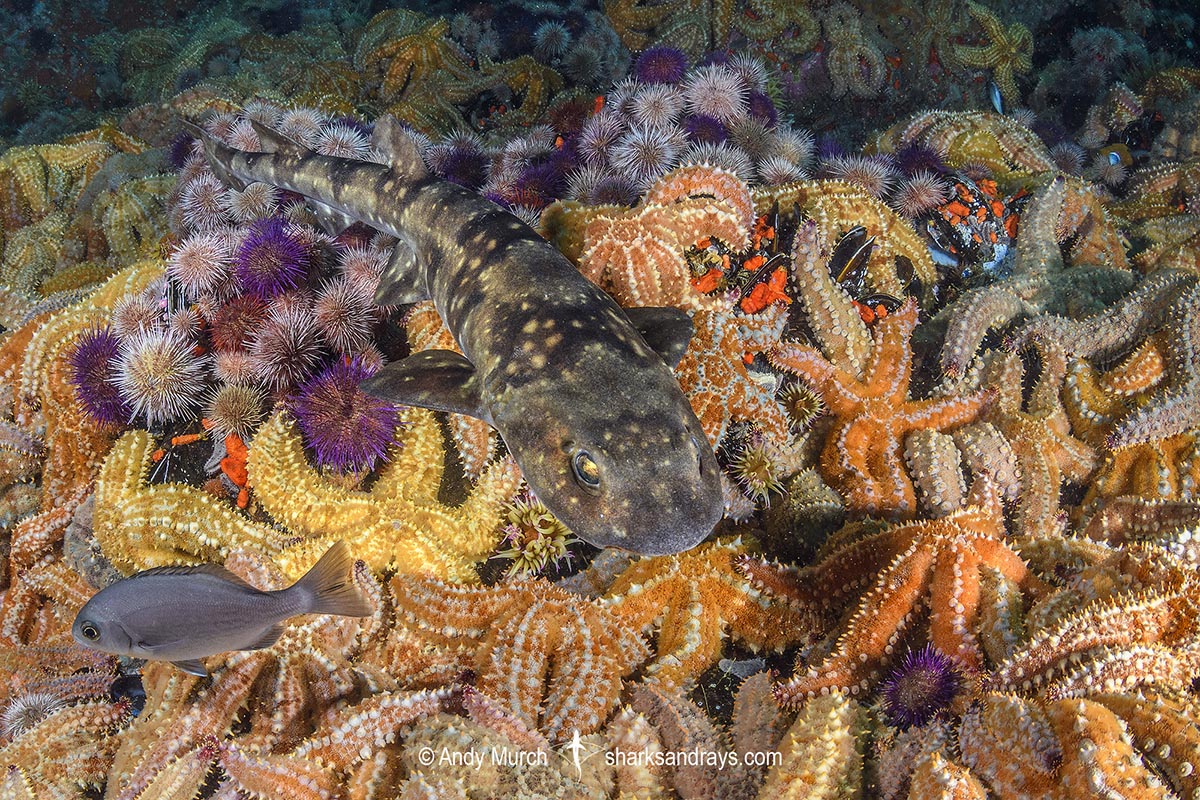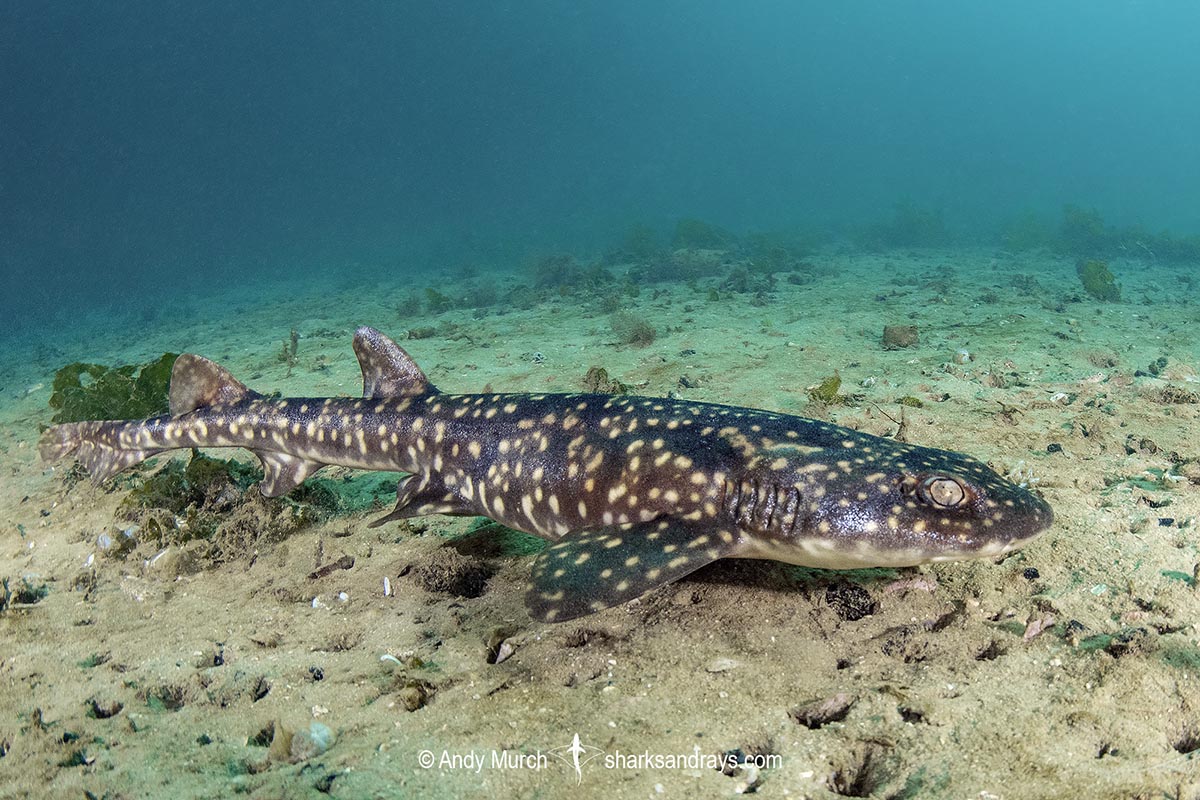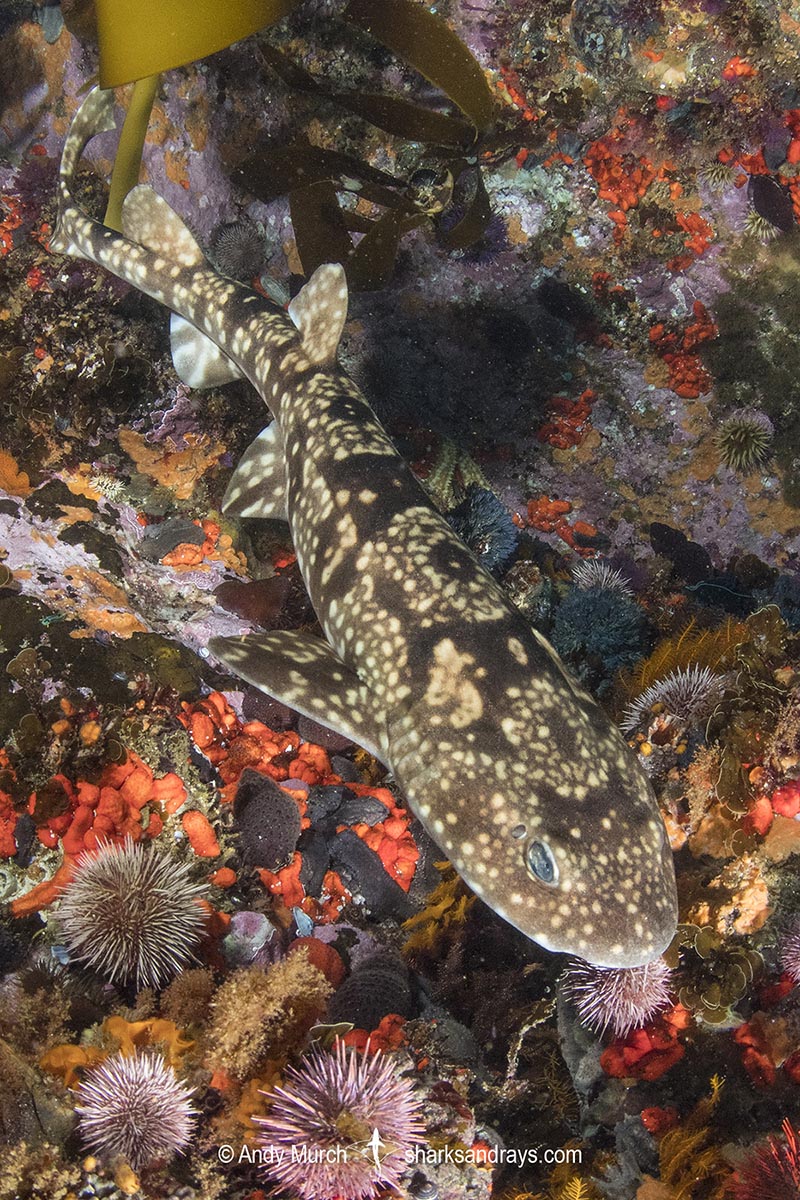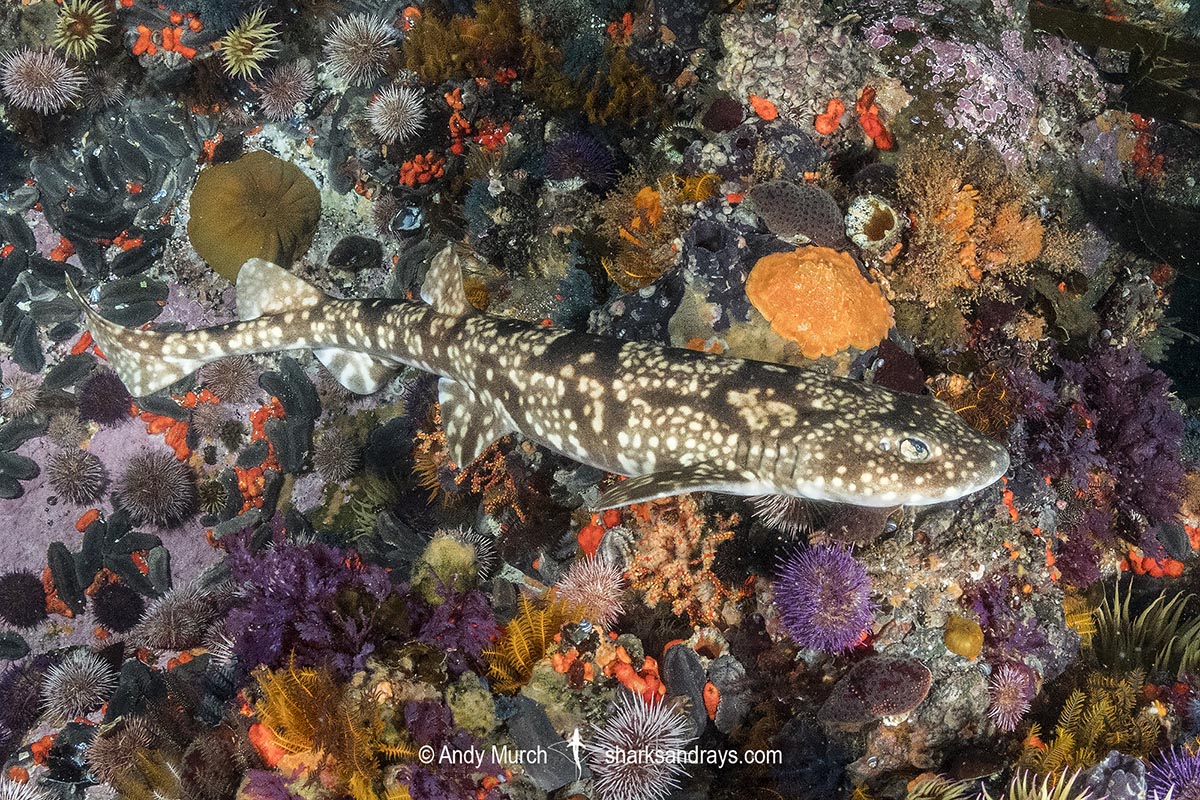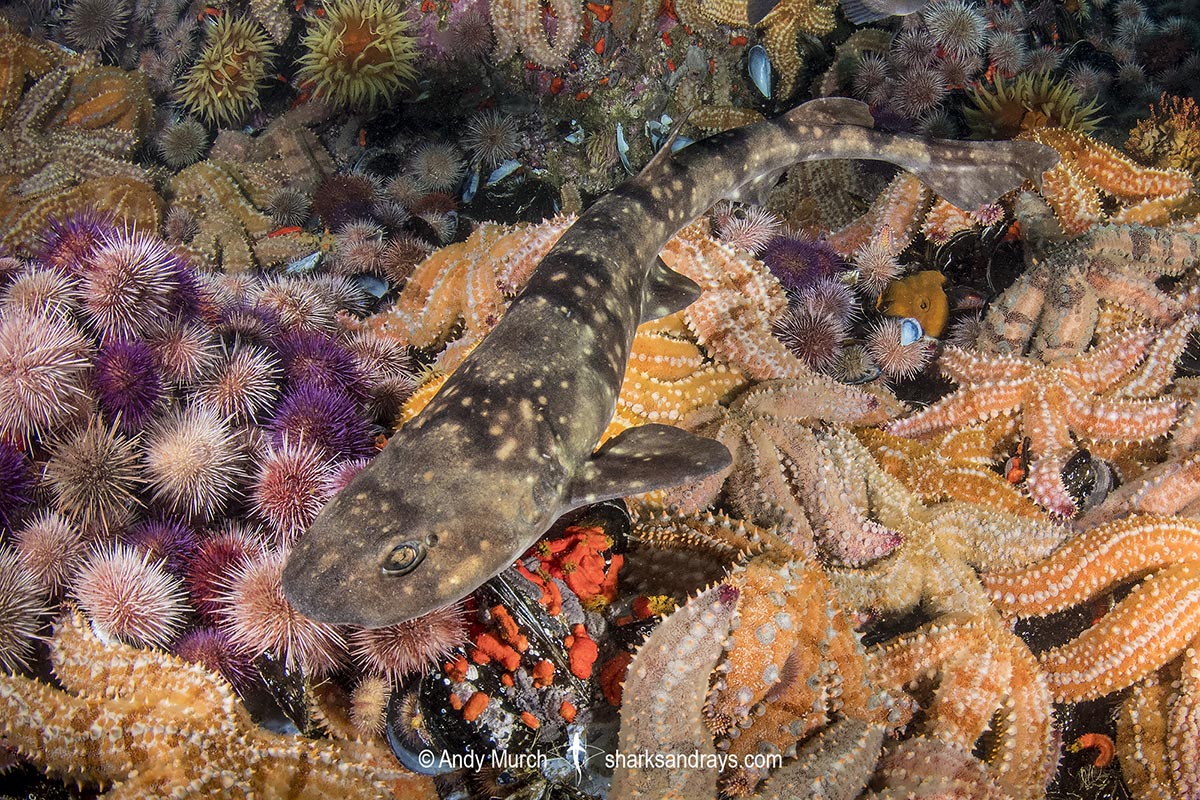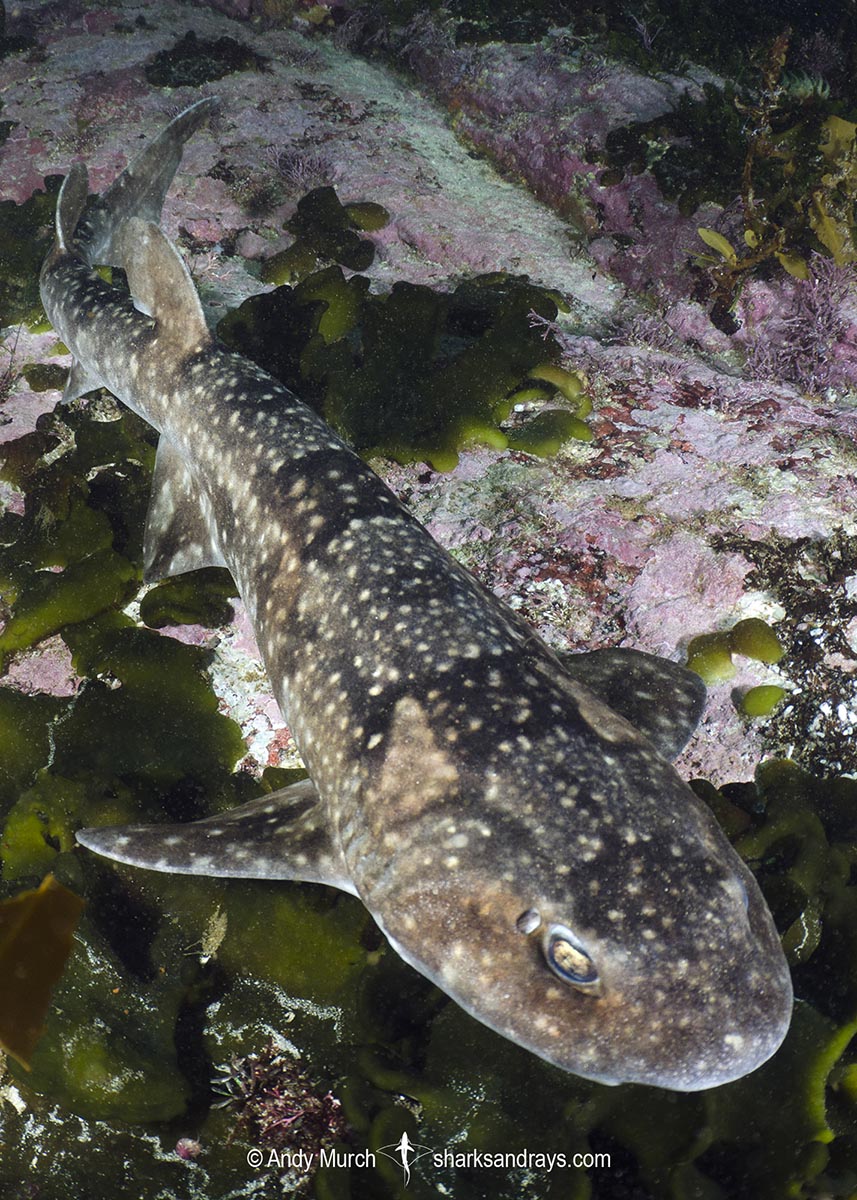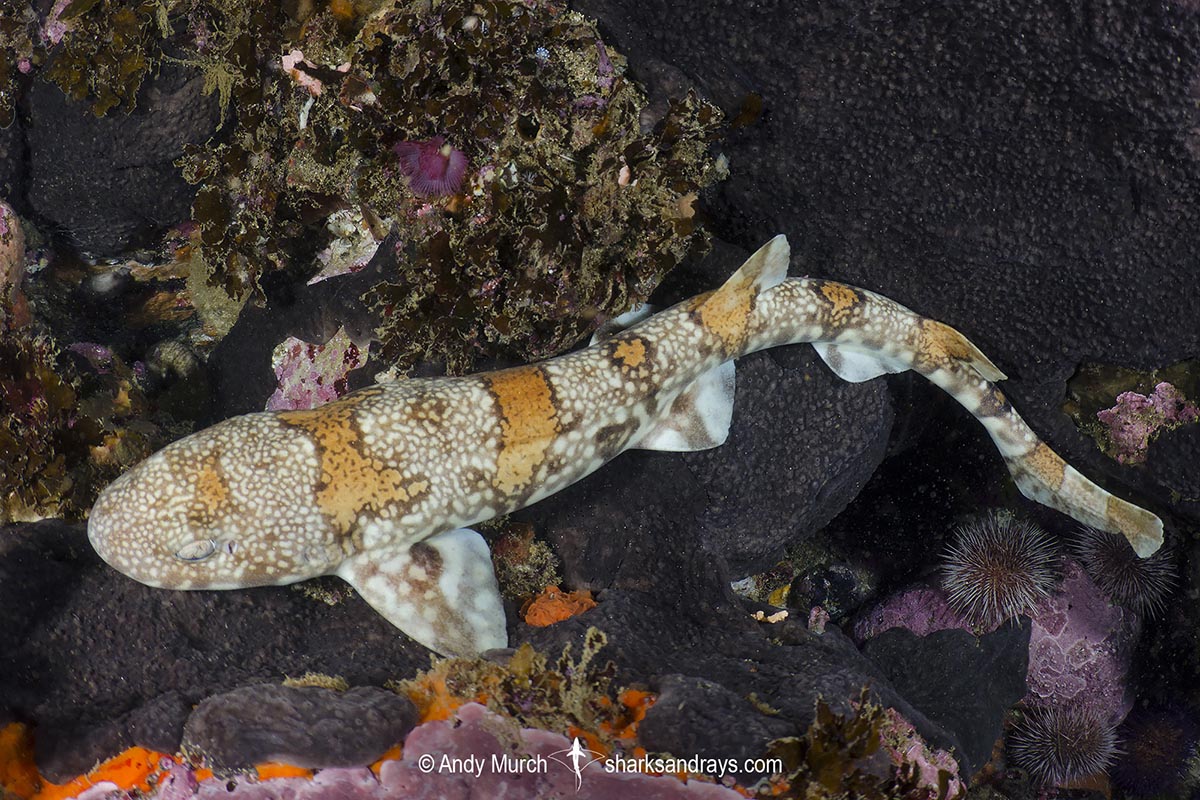Common name(s)
Dark Shyshark, Pretty Happy.
Binomial
Haploblepharus pictus
Synonyms
Scyllium pictum
Identification
Small size. Head broad with a short rounded snout. Greatly expanded nasal flaps. First dorsal origin approximately level with pelvic fin insertion. First and second dorsal fins of equal size.
Large dark saddles on back and tail. Saddles usually devoid of spots. Brown background between saddles may be densely covered in pale spots or plain. Overall coloration may appear light or dark.
Size
Maximum length 60cm. Born at 10-12cm.

Conservation Status
LEAST CONCERN
Although the Dark Shyshark is caught as bycatch in a wide range of commercial and recreational fisheries, this species is usually discarded and remains relatively abundant. In the western portion of the dark shyshark’s range, fishing pressure is low.

Habitat
Rocky reefs, kelp forests, and sand flats. Found from intertidal zone to at least 35m.
Distribution
The dark shyshark has a limited range in the Southeast Atlantic and Western Indian Ocean from north of Lüderitz, Namibia to East London, South Africa.
Reproduction
Oviparous. Gestation is 6–10 months.
Diet
Small bony fishes, sea snails, crustaceans, cephalopods, and polychaete worms. Occasionally consumes algae.
Behavior
Rests in crevices during the day. Curls into a ball with tail over eyes when threatened; hence common name ‘shy shark’. See Dark Shyshark image #096
Reaction to divers
Extremely easy to approach. Will allow divers to follow it through the kelp forest as it searches for food. Easily attracted by small amounts of bait.
Diving logistics
The dark shyshark can be encountered at virtually all rocky or kelpy dive sites in and around False Bay.
Miller’s Point on the west end of Simonstown is a popular spot in False Bay that can be dived by boat or from shore if the surf is not too high. It would be unusual not to see a handful of dark shysharks, plus numerous other catshark species, spotted gully sharks, and sometimes sevengill sharks at this beautiful spot.
False Bay is the first stop on Big Fish Expeditions’ South African Endemic Shark and Ray Expedition.
Similar species
Puffadder Shyshark Distinguished by lighter overall coloration, and fine covering of small pale spots over a light brown base, and bold reddish-brown saddles.
Brown Shyshark Distinguished by broad head, stockier body, and overall plain brown coloration, rarely with dusky saddles.

